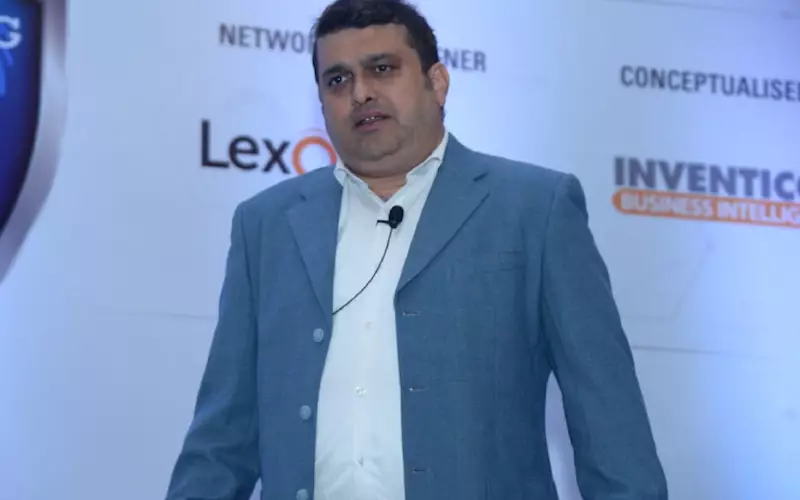Brand owners should focus to incentivise post-consumer waste: Reliance's Kale
The WhatPackaging? team speaks to Amit Kale, assistant vice president, Reliance Industries, which he says is proactively collecting plastic waste and converting into fibre since 2002
25 Jan 2020 | By WhatPackaging? Team
What are the key challenges facing the industry?
The key challenges which the industry faces today is economic slowdown. In addition, there is a wake in demand of sustainable initiatives because of the plastic ban.
While packaging has a great role in preserving food and reducing food waste, we also hear about decreasing levels of nutrition caused by packaged food types. How can packaging play a role in driving this and help us achieve nutrition security along with food security?
Adding nutrition to the product is the responsibility of a food technologist. If the nutritionists can save these components in the food, we packaging technologists will develop pack to preserve it and give it a longer shelf life.
What about the drive towards alternatives which are more healthy and nutritious?
Talking about alternatives to food which is more healthy and nutritious would be fresh and not packaged. This means a shorter shelf life and corresponding to larger wastage, but that’s how our society is. It keeps going in circles. First they thought, a lot of food is wasted, so they focused on food preservation and introduced packaged food and now people think that they should consume fresh.
This means we have completed a full circle. Today, we are once again at the same vector point of the circle where we have to decide between a longer shelf life and more nutrition. I am sure our society will take the correct decision as they did in the past.
If you were to define single-use plastics, what would it be?
If we are talking about India, we do not have a single use plastic as such, because we have a habit of repurposing, I always say in my talks, “If there was a gold medal for sustainability, it will undoubtedly come to India”.
As for single-use plastic referring to the PWM rules 2016, then according to me, they are referring to, “any rigid or flexible container or pouch, in which manufactures fill product only once before it is discarded or repurposed is single use”.
If we were to launch a coding system to identify and classify all packaging out there to cover entire lifecycle of packaging from its constituents to its functions and its ability to recycle what should it be?
It should be classified as a clearly defined dry waste management policy.
Do you think packaging is at times over-engineered? If yes, can you cite an example?
Yes! With the advent of plastic laminates especially metallised films, metallisation is used more often than not for aesthetic purpose than barrier. For example, a metallised carton used for toothpaste or any other lamitube is waste, and it possesses a challenge for recycling.
Collection of post-consumer packaging is often cited as the biggest hurdle in recycling and meeting EPR goals. Do you think packaging can be optimised/ standardised in some ways that can help make collection easier?
Yes! The post-consumer collection is the biggest challenge. Lay people are not aware. But most of the time they are ignorant towards the environment. I feel the government or the brand owners need to incentivise the consumer for providing segregated clean packaging, during Swachch Bharat Abiyaan.
The Prime Minister had said that if the population of India decides to be Swachch no one can stop India from being Swachch. To start with the government needs to provide end-to-end infrastructure for waste collection, segregation and recycling, and then promote recycled polymer for various applications. For post recycling, the government has a mandate that 20% of plastic waste should be used for road construction similar to what cement kilns have to use plastic waste for its thermal value. I think now the focus should be cleaning and segregation at the source.
How so?
For optimisation of packaging, the focus is to use the same family laminates for ease of recycling. However I am curious as to how sustainable this initiative will be. I think, scalability and efficiency post use will tell.
Call for an action plan in India!
We have proactively started collection of plastic and converting into fibre since 2002. Today, we are converting about 100 MT per day in two of our plants located in Punjab and Uttar Pradesh. I think in order to use plastic effectively like I have mentioned the government needs to create infrastructure or at least promote recycling by providing various schemes or funding for collection segregation cleaning and recycling also I am sure there are various institutes like IIT have developed products from recycled plastic on a lab scale, to make it scalable some projects can be funded by government or industry. Also as a procurement or development professional our focus today is quality both in terms of product and packaging, timely delivery and cost, from now on we should include sustainability as one of the priorities.
All views are expressed are in the form of Amit Kale’s personal opinion. The authors do not necessarily reflect the official policy or position of any other agency, organisation, or company











 See All
See All